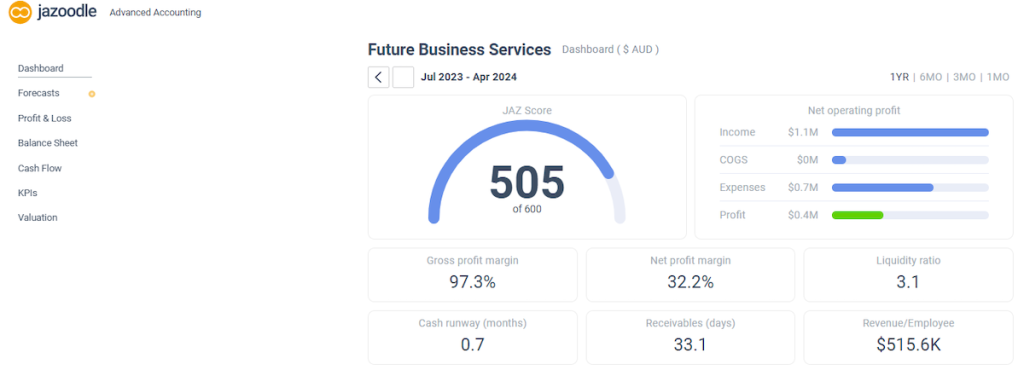The post New Year: Time for Client Engagement appeared first on Smithink.
]]>Why does this happen, and what can we do about it?
In an era where organic growth can be challenging due to economic or local factors, unlocking additional growth through existing clients seems like low-hanging fruit. Common reasons for missed opportunities include lack of resources or being stuck in the compliance vortex.
However, more often than not, the core issue lies in ineffective client engagement—a failure to have meaningful conversations that uncover clients’ goals and challenges.
For younger firm leaders, the barrier often stems from a lack of confidence to conduct these deeper discussions that build trust and engagement. So, how can firms overcome this challenge? Like most things in life, it’s a bit of a carrot combined with a stick.
Steps to Boost Client Engagement
1: Include Team Members in Client Meetings
This seems so obvious, but for many firms, it is so hard to achieve consistently. There is no better way to learn than to observe the firm leaders engage effectively with clients. Over time, the team members should be encouraged to participate in discussions to develop their questioning skills. When attending the meetings, they should become responsible for taking the meeting notes and action items.
It requires discipline to do this. When organising meetings, the team members’ availability must also be considered. Sometimes, I’m told that clients won’t like team members present or will be concerned about cost. However, I have spoken to many clients about this, and when properly explained, they understand the benefits in terms of team members having a better understanding of their affairs.
2: Practice with Mock Needs Reviews
Conducting mock needs reviews is where one person takes the role of the client, and the others question them. It is an effective way to develop skills. I have seen in firms that have adopted this idea that, in doing so, they have discovered:
- Things that they don’t know about the client
- Areas where they have opportunities to help the client
That means they already have some issues to raise when an actual meeting occurs with the client. This boosts confidence in conducting the meeting.
3: Use Question Prompts
Provide tools like a question sheet to guide client conversations. The 10×10 Needs Review (downloadable here) is one such resource. Note, however, that it is not a checklist to be completed, merely a sheet to give you an idea of questions that can be asked to get the client talking. The key, however, is to listen intently. While listening, consider the following question you should be asking to drill deeper into the issue.
4: Choose Comfortable Meeting Locations
The intention is to get the client to talk often about issues that may make them uncomfortable. Think about the location that may make the client feel more comfortable. It could be a coffee shop, their office or home, driving in a car, or going for a walk along the beach.
5: Ask the Tough Questions
To help clients effectively, you need to understand what’s going on in their world. Often, the most sensitive issues are the most important to be discussed. Issues relating to their health and relationships can critically impact a client’s financial affairs. As long as the client knows why you are asking such questions, they will appreciate your concern, further cement trust in the relationship, and show that you care. Of course, some clients may not want to discuss such things – that is their decision, but even those clients will not be critical of your desire to help them.
6: Create a Scorecard with Performance Benchmarks
Here’s the stick! Create a scorecard detailing the number of needs reviews done, proposals for new work submitted, proposals won, and fees generated. Give people targets. Monitor regularly. Mentor and coach. Behaviours need to change. Peer pressure and accountability is an essential tool.
Every client, every year, should have one of these “needs review” meetings. People’s circumstances change, and life events occur. Clearly, firms that have successfully conducted these client discussions have developed deeper relationships with their clients and enjoyed growth from additional service offerings resulting from unlocking the client’s needs.
David Smith conducts firm reviews and facilitates the development of strategic plans and business plans. Contact David at [email protected] to explore how he can help your firm.
The post New Year: Time for Client Engagement appeared first on Smithink.
]]>The post Capacity? What capacity? appeared first on Smithink.
]]>Attitudes don’t help, either. I was recently in a firm where the partners were quite proud that they had effectively matched their available labour to the work in their pipeline. Their free capacity was less than 3%. While this may maximise short-term profits, how will this firm ever grow?
Labour cost is far and away the biggest cost in any professional service firm, yet few firms have effective resource and capacity plans. When I ask firm leaders what free capacity they have in their firm, few can confidently answer based on their capacity planning. For many, it is more of an educated guesstimate. Even fewer can confidently answer at what level in the firm or at what time of the year the free capacity exists as they lack a detailed resource plan. This lack of accurate information means that the firm is unable to make the best decisions about its labour. When do we need to add additional resources, and at what level? When should we be asking staff to take holidays? How much time is available to develop new services or undertake marketing? When should these activities occur so as not to interfere with our day-to-day client service? When is the best time to conduct training?
There are two elements to effective labour planning.
The capacity plan
An effective capacity plan requires two calculations. The first, termed “bottom-up,” looks at the number of productive hours that team members should generate each month multiplied by estimated charge rates. The second, termed “top-down,” estimates the fees that will be generated from each client plus an additional amount for estimated special work from existing clients.
The difference between the two numbers is the firm’s free capacity. A low free capacity will certainly maximise profits in the short term but will restrict a firm’s capacity to grow. Low free capacity will almost guarantee that work will need to be done by people who are too senior or junior for the job, resulting in inefficient use of labour and lowered profitability. Firms with a desire to grow need to create the free capacity. Progressive growth firms ensure that they have a minimum 20% free capacity to ensure that they can effectively service new clients and have time to develop new services and conduct marketing activities.
The resource plan
While many firms undertake capacity planning, few have detailed resource plans, as significantly more work is required. It also involves changes in how clients are engaged. Only accounting firms have a business suited to resource planning since much of the work is repeated year on year and can, therefore, be planned. Most other professional service firms have a lower proportion of their work repeating year after year.
An effective resource plan estimates the hours required for each client group’s annual work. The hours are plotted into a month and matched to the team member most suited to undertake the work. This allows one to see team members who have too little or too much work in a given month. Adjustments can then be made to smooth out issues.
Clients need to be engaged so that they will agree on the month their work will be done. Many clients are flexible, but some are not. Plan the inflexible clients (bank needs reports, etc.) first and use the rest as fillers. The advantage to the client is that they know when the work will be done, and the turnaround time in the firm is substantially reduced as work is not sitting in the corner waiting to get started.
Firms that have implemented resource plans have all seen significant benefits. It’s not easy, but the benefits of team morale and client satisfaction should not be underestimated. Reduced write-offs from better work allocation and overall efficiency from smoothing work throughout the year add to profitability.
A firm that I worked with many years ago reported to me that implementing effective capacity and resource plans had the biggest positive impact on how the firm was managed.
So, with the new year just around the corner, take some time to consider developing your own capacity and resource plans to position your firm to make the best use of your valuable (but expensive) labour.
David Smith conducts firm reviews and facilitates the development of strategic plans and business plans. Contact David at [email protected] to explore how he can help your firm.
The post Capacity? What capacity? appeared first on Smithink.
]]>The post The Importance of a Strategic Plan for Accounting Firms appeared first on Smithink.
]]>In today’s rapidly evolving business environment, a robust strategic planning process is not just a luxury—it’s a necessity for accounting firms. The challenges posed by changing market dynamics, technological advancements, and workforce issues demand that firms take a proactive stance to remain competitive.
Why Is Strategic Planning Essential for Accounting Firms?
Navigating Change
The accounting landscape has undergone significant transformations, particularly in recent years. New technologies, regulatory changes, and shifting client expectations require firms to adapt. A strategic plan provides a roadmap to navigate these changes effectively.
Diversifying Services
Firms that diversify their service offerings are better positioned to meet their clients’ evolving needs. Strategic planning for accountants allows firms to assess market demands and identify new growth opportunities.
Building Accountability
Just as you stress the importance of accountability with your clients, your firm must have internal accountability to ensure everyone is aligned with the firm’s goals. A strategic plan fosters a culture of ownership among partners and staff, driving commitment to shared objectives.
Succession Planning
Many firms overlook succession planning, which can jeopardise long-term stability. A comprehensive strategic plan incorporates succession strategies, ensuring the firm’s legacy and client relationships are preserved for future generations.
Enhancing Team Engagement
Engaging your team in the strategic planning process not only empowers them but also increases their commitment to the firm’s vision. By involving employees in discussions about the future, you foster a sense of belonging and purpose.
Are You Ready to Reflect on Your Firm’s Strategy?
As we approach the end of the year, this is the perfect time to reflect on your firm’s strategy. Consider these thought-provoking questions:
- When was the last time your firm reviewed its strategic plan?
- Does your current plan align with your vision for the future?
- Are you clear on the actions required to achieve your strategic goals?
If your firm’s strategy needs to be refreshed or developed, you’re not alone. Many firms face similar challenges, and seeking assistance can provide the necessary guidance and accountability.
Take Action Towards Strategic Success in Accounting
If your firm needs help creating or updating its strategy, consider exploring our Strategic Planning Enabled program. This structured process will help you assess your current position, develop tailored strategies, and stay accountable to your objectives.
Let’s make the upcoming year one of strategic clarity and focused growth for your firm!
Book a complimentary 45-minute Strategy Planning Assessment with Mark Holton today to gain insights into your firm’s current state and establish the right direction for future growth.
The post The Importance of a Strategic Plan for Accounting Firms appeared first on Smithink.
]]>The post Building an Accountability Culture Without the “Baseball Bat” appeared first on Smithink.
]]>Challenges in Accountability
A major hurdle is maintaining accountability in director or partner meetings. It’s difficult to hold others accountable when you haven’t fulfilled your own commitments. These meetings should only address serious issues requiring escalation.
Committees also struggle with accountability as members may shift responsibility. It’s more effective for a single individual to be accountable, even if they delegate tasks. This person must ensure that tasks are completed.
Steps to Create Accountability
1: Define Clear Outcomes:
Set specific outcomes with associated actions and deadlines. This applies to individual performance, team management, or firm responsibilities. Establish monthly or even weekly goals as needed.
2: Regular Reporting:
Require periodic reports covering:
- Achievements during the period
- Unmet goals and reasons, along with corrective actions
- Plans for the next period
- Issues or concerns about meeting outcomes
3: Review Meetings:
When performance is off track, schedule a meeting with the managing director or partner to review and agree on further actions. Regular follow-up meetings may be needed to track improvements.
4: Escalation Process:
If an individual consistently fails to meet deadlines or outcomes, involve the firm’s executive to discuss performance and required actions. This often creates sufficient peer pressure to improve performance. Persistent issues may require additional meetings with the managing director or executive.
Maintaining Accountability
The goal is to ensure no one can evade accountability. Clear expectations and consistent monitoring foster a strong accountability culture. If someone repeatedly ignores the process, the executive must address the behaviour firmly, regardless of the person’s seniority. Continued failure to comply may warrant serious reconsideration of their role in the firm.
No Threats Required
The process should never be threatening. The escalation should be transparent, with everyone understanding why it’s happening and what is expected.
Consistency is Key
Many firms falter in maintaining accountability due to time constraints or reluctance to confront issues. To build a lasting accountability culture, consistency in implementing and following the framework is crucial.
Start by setting clear outcomes, defining actions, and establishing deadlines. Implement a robust reporting process and engage in regular follow-up conversations. The results may exceed your expectations.
David Smith conducts firm reviews and facilitates the development of strategic plans and business plans. Contact David at [email protected] to explore how he can help your firm.
The post Building an Accountability Culture Without the “Baseball Bat” appeared first on Smithink.
]]>The post Running Effective Advisory Board Meetings: Tips and Best Practices appeared first on Smithink.
]]>An advisory board meeting is a collaborative and structured gathering where an organisation engages with a group of advisors and stakeholders to seek expert guidance and insights.
Running advisory board meetings for clients can be crucial for providing valuable guidance and support to your clients and enhancing the value of your business advisory services. Here are some tips for running effective board of advice meetings:
Prepare an Agenda
Create a clear agenda outlining the topics to be discussed during the meeting. Share the agenda with clients in advance so they can come prepared. In my experience, every board meeting I have attended is always preceded by an agenda and followed by an order of proceedings.
Foster Open Communication
Encourage open dialogue and active participation from all clients and your team. Create a supportive environment where everyone feels comfortable sharing their thoughts and concerns.
Focus on Client Needs
Keep the discussions client-centric and ensure that the advice provided addresses their specific needs and challenges. Conducting a needs analysis before these meetings is the best way to identify what is important to the client and help link solutions to these needs.
Provide Actionable Insights
Offer practical advice and actionable insights that clients can implement to improve their businesses or address their concerns. Concentrate on SMART Goals (Specific, Measurable, Achievable, Relevant, and Time-Bound).
Follow Up
After the meeting, follow up with clients to ensure they have the support and resources needed to act on the advice provided. Short, sharp telephone calls or online meetings keep the client focused on their goals and commit them to an accountability model driven by you.

Maintain Confidentiality
Respect the confidentiality of client information and discussions during the meeting to build trust and foster a sense of security.
Stay Informed
Keep yourself updated on industry trends, market changes, and regulatory updates to provide relevant and timely advice to your clients. Every meeting needs to look and feel slightly different to the client. Introduce new concepts gradually to build confidence with the client and make each meeting feel fresh and engaging.
Following these guidelines ensures that your advisory board meetings are productive and beneficial for your clients.
Benefits of Effective Advisory Board Meetings
Effective advisory board meetings can provide numerous benefits, including:
- Enhanced Decision-Making: Access to diverse expertise helps clients make informed decisions.
- Strategic Guidance: Clients receive strategic insights that align with their business goals.
- Networking Opportunities: Clients can connect with industry experts and peers.
- Accountability: Regular follow-ups and actionable insights ensure clients stay on track with their goals.
By optimising your advisory board meetings, you can offer significant value to your clients and strengthen your advisory services.
Mark is an expert in helping accounting firms optimise their strategic planning. If you would like to set up a complimentary 45-minute strategy assessment, please contact us.
The post Running Effective Advisory Board Meetings: Tips and Best Practices appeared first on Smithink.
]]>The post Unlock Your Accounting Superpowers appeared first on Smithink.
]]>The Power of 1%
Scenario 1 – Your client’s crushing it
Your client’s gross and net margins are holding or increasing, but they have only 1.3 months of cash runway. Ideally, this should be between 3 and 6 months. Digging deeper, you find average debtor days at 39, cash conversion at 70 days, and creditors paid within 10 days. Despite profitability, cash is leaking.

Noticing this, you decide to dig a little deeper. The average debtor days are 39, cash conversion is 70 days, and creditors are paid within ten days. Despite profitability, the business is leaking cash. What can be done?

You create a 12-month forecast, reducing debtor days from 39 to 18 and extending creditor days to 30. This frees up $30k in cash for the business through a simple process change, adding real value.
Scenario 2 – Your client is struggling
First, assess debtor, creditor, and inventory to generate cash quickly. Analysing data, you find gross margins steady but net margins falling due to increasing wages. Overemployment is confirmed through revenue per employee analysis. Your insights and forecasts are crucial for your client’s business health.
Enhance Your Client Services
Every entrepreneur needs your analytical and advisory skills. Here’s what might be stopping you:
1: Lack of Skills/Structure
Smithink can provide a blueprint for your business.
2: Cumbersome Technology
Use platforms that are user-friendly and scalable, like Jazoodle.
3: Confidence
Start with key metrics and expand over time.
4: Service Levels and Pricing
Smithink can help define and price your services appropriately.
SMEs need your business advice services, and you can build a strong monthly recurring revenue stream.
If you would like to find out more about Jazoodle and how it can help your accounting firm find its superpowers, get in touch.
Andrew
Andrew Paton-Smith is the co-founder and CEO of Jazoodle. Jazoodle is an easy to use reporting, forecasting, and valuation platform for accountants and advisors. Jazoodle enhances your advisory superpowers and allows you to scale them across your client base. Find out more at www.jazoodle.com
The post Unlock Your Accounting Superpowers appeared first on Smithink.
]]>The post Building the Future of the Accounting Profession appeared first on Smithink.
]]>In this article, we will explore the importance of mentoring, the benefits it brings to both the team members and the firm, and best practices for implementing effective mentorship programs.
The Importance of Mentorship
Accounting is a complex and ever-evolving field that requires a deep understanding of regulations, standards, and best practices. Whether they are young accountants fresh from academic environments or professionals already working in the industry looking to advance their careers, many face significant challenges in their professional development. Mentorship is critical in bridging these gaps by providing guidance, support, and practical insights not always covered in textbooks or acquired through work experience alone.
Accelerating Skill Development
Mentors can help young accountants develop essential technical skills, such as financial analysis, auditing, tax planning, and compliance. Through hands-on training and real-world applications, mentees gain a deeper understanding of these concepts, enabling them to apply their knowledge more effectively and efficiently.
Enhancing Soft Skills
In addition to technical skills, mentors can also help develop crucial soft skills, such as communication, problem-solving, questioning skills, customer service and time management. These skills are vital for career advancement and professional success, as they enable young accountants to work effectively in teams, manage client relationships, and navigate complex projects.
Fostering Professional Growth
Mentorship provides a platform for young accountants to set career goals, receive constructive feedback, and build professional networks. Mentors can offer valuable advice on career progression, industry trends, and further education and certification opportunities. This guidance helps with decisions about career paths and develops a clear vision for the future.

Benefits for the Firm
Mentoring programs are not only beneficial for young accountants but also for accounting firms. Firms that invest in mentorship see numerous advantages, including:
Improved Employee Retention
Recruitment and retention of young team members is a constant challenge. By providing mentorship, firms can create a supportive and engaging work environment that encourages young accountants to stay and grow within the firm. This can lead to increased employee loyalty and reduced turnover.
Enhanced Firm Reputation
Firms known for their strong mentorship programs often attract top talent. Young professionals seek out firms that offer robust support systems and opportunities for growth. A reputation for excellent mentorship can give firms a competitive edge in the talent market.
Development of Future Leaders
Mentorship helps identify and nurture future leaders within the firm. By investing in the development of young accountants, firms can build a pipeline of skilled and motivated professionals who are prepared to take on leadership roles in the future.
Introducing FutureFocus Accounting Firm Mentoring
I am excited to introduce my innovative program, FutureFocus, to assist firms with the development of their young team members. With over 40 years of experience in the accounting industry, I have had the privilege of working with some of the best firms, partners, and managers.
FutureFocus is designed to share my insights, strategies, and knowledge to help young accountants excel in their chosen careers. This program will provide structured mentorship, personalised guidance, and valuable resources tailored to the unique needs of each young accountant, their firm and future industry leaders.
Mentoring young accountants is a vital investment in the future of the accounting profession. By providing guidance, support, and opportunities for growth, mentorship programs help young professionals develop the skills and confidence needed to succeed. For accounting firms, effective mentorship leads to improved retention, a stronger reputation, and the development of future leaders. With thoughtful planning and commitment, mentorship can be a transformative force, shaping the next generation of accounting professionals.
For more information on how FutureFocus can benefit you, feel free to reach out and discover how we can help build the future of the profession together.
I’m excited to share my insights, strategies, and knowledge to help young guns excel in their chosen careers.
Start a transformative journey with Mark’s one-year mentor program, tailored to guide your accounting career in the right direction. Unlock opportunities for growth and success with expert support.
The post Building the Future of the Accounting Profession appeared first on Smithink.
]]>The post Do we really need all this complexity? appeared first on Smithink.
]]>This complexity also brings some danger. Solutions can often be simpler than they appear, but dealing with the systems and processes can mean that the simple solutions are lost in a cloud of processes.
Perhaps I’m old school, but sometimes simplicity is much better, cheaper, and easier to manage, with more effective outcomes.
I wonder if people are losing faith in trusting their intuition. Have you read the book Blink: The Power of Thinking Without Thinking? It’s about mental processes that work rapidly and automatically from relatively little information. Spontaneous decisions being as good as carefully planned and considered ones.

How often have you interviewed someone for a role and known in the first minute whether you’ll employ them or not? I recall many occasions when it was obvious to me in the first 30 seconds that someone wasn’t the right fit, and I then had to spend the next 45 minutes talking to them so that they felt they had a fair hearing. Equally, I almost always knew straight away that someone was the right appointment. I never changed my initial impression. I was rarely wrong.
I wonder about the value of tests and surveys in helping identify the next emerging leaders. To me, it has always been obvious. Energy, enthusiasm, commitment, rapport, and talent can be obvious if you have regular cups of coffee with your team. I worry that surveys and tests will result in a blandness in leadership. There are many instances where left-field, out-of-the-norm appointments can bring a new vision and a new way of managing that can transform organisations. They may ruffle a few feathers, but they may also drive the organisation to new levels of success – think Jobs and even love him or hate him, Musk. I wonder if they would ever pass the leadership tests.
I get concerned about Net Promoter Scores, where management hides behind the apparent high scores of their business. I’ve seen instances of high scores where it is obvious to others in the organisation and customers that the business is failing to deliver. There are obvious examples related to the accounting profession. Over the years, I have conducted round table meetings with clients of many accounting firms. The qualitative feedback from these sessions has been invaluable in understanding what needs to be improved in customer service. As an aside, the top need communicated over and over again by clients was, “Please provide proactive advice that helps me manage my business better, sustain it for the future and/or build my family’s wealth”.
Do we really need surveys and complex assessments to help us identify what needs to be done to nurture a high-performing workforce? We’re overcomplicating it. What do the stars want? Over many years, my interviews with star team members have shown that they want interesting work, recognition, client contact, advancement, feedback, and opportunities to be challenged and developed. Few firms focus well enough on these basic things. Let’s get the basics right before we go further.
By now, I’ve probably offended half the business community, but I hope I might challenge you to take a step back and consider what you’re doing. Are we overcomplicating things? Can it be simplified? If it can be simplified, both your team and your clients will thank you.
Perhaps I’m getting old and grumpy. I think not. This blog has been growing slowly inside me for years. Like the boiling frog, one doesn’t notice the intrusion of complexity until it is too late. Now, say after me, “I’m as mad as hell, and I’m not going to take this anymore”.
David Smith conducts firm reviews and facilitates the development of strategic plans and business plans. Contact David at [email protected] to explore how he may be able to help your firm.
The post Do we really need all this complexity? appeared first on Smithink.
]]>The post Zero Tolerance for Process Compliance: A Blueprint for Success appeared first on Smithink.
]]>The first hurdle in achieving process compliance often lies in leadership. It’s not uncommon to find that leaders, in their quest to manage a myriad of responsibilities, may inadvertently bypass established procedures. This sends a conflicting message to the team, undermining the importance of processes and fostering a culture where shortcuts are tolerated. Addressing this challenge requires alignment among leaders, a shared commitment to adhering to processes, and leading by example.
Consistency is key. When different leaders enforce disparate processes, it creates confusion among the team, leading to inefficiencies and potential quality issues. Establishing a unified approach to processes sets a clear expectation for the entire firm and minimises the risk of deviation.
Once a cohesive framework is in place, it’s time to roll up the sleeves and review existing processes. Are they efficient? Are they necessary? Can technology be leveraged to automate tasks and enhance quality? It’s a continuous journey of improvement, striking the delicate balance between efficiency and quality that suits the firm’s unique needs.

Documentation is paramount. Clear guidelines, templates, and checklists ensure that everyone is on the same page, leaving little room for ambiguity. Regular training reinforces the importance of processes and keeps skills sharp.
But the work doesn’t stop there. Regular reviews are essential to ensure that processes are still effective and relevant. Innovation should be embraced, with someone appointed to spearhead process improvement initiatives.
Accountability cannot be overlooked. Zero tolerance means just that – if processes are not followed, there are consequences. Redoing work may seem counterintuitive in the face of tight deadlines, but it’s an investment in upholding process compliance and maintaining quality standards.
Peer reviews offer an additional layer of assurance. Randomly selected jobs undergo scrutiny by independent managers, ensuring not only process compliance but also technical accuracy and overall quality.
The impact of a focus on process compliance extends far beyond the confines of the firm. It enhances efficiency, boosts profitability, elevates work quality, enriches client service, and fosters team satisfaction. In an era of resource scarcity, it’s easy to lose sight of this critical aspect of operations. Yet, it’s precisely during such times that a steadfast commitment to processes can make all the difference.
So, don’t procrastinate. Appoint your process champion today and embark on the journey towards zero tolerance for process compliance. It’s not just a mantra – it’s a blueprint for success.
David Smith conducts firm reviews and facilitates the development of strategic plans and business plans. Contact David at [email protected] to explore how he may be able to help your firm.
The post Zero Tolerance for Process Compliance: A Blueprint for Success appeared first on Smithink.
]]>The post Mastering Client Engagement: A Guide to Asking the Right Questions for Business Success appeared first on Smithink.
]]>Initial Contact
Begin with understanding how prospective clients find you. This insight informs your marketing strategies and helps tailor your approach to attract the right clientele. Embed questions like “How did you discover us?” and “What services are you seeking?” in your contact forms to gauge their interests and needs. Don’t forget you can download our Needs Review Checklist here.
Building Relationships
Maintaining an open line of communication is key to nurturing client partnerships. Enquire about their onboarding experience and offer technical support when needed. By addressing concerns early on, you enhance client satisfaction and retention.

Expanding Services
As you deepen your understanding of clients’ businesses and financial goals, seize opportunities to offer additional services. Ask open-ended questions like “Where do you envision your business in five years?” to uncover new avenues for collaboration and growth.
Feedback Gathering
Implement surveys to gather feedback and insights from clients. Probe into their experiences and preferences to refine your offerings and enhance customer satisfaction. This data also informs targeted marketing strategies tailored to your client demographic. Read more on the importance of client feedback here.
Client Retention
When clients decide to move on, seize the opportunity to learn and improve. Ask probing questions like “What could we have done better?” and “Did we meet your expectations?” to understand areas for enhancement and increase client retention.
Ultimately, fostering open and honest communication builds stronger professional relationships. Clients value feeling heard and supported, fostering a sense of partnership with your firm. By asking the right questions and actively listening to your clients, you demonstrate your commitment to their success, ultimately fostering long-term business relationships.
Mark is passionate about empowering accountants through education and mentoring towards growth and excellence. Whether you’re seeking a dynamic presenter for your firm or event, or looking for personalised mentorship to nurture your rising talent, contact us to find discuss your needs.
The post Mastering Client Engagement: A Guide to Asking the Right Questions for Business Success appeared first on Smithink.
]]>